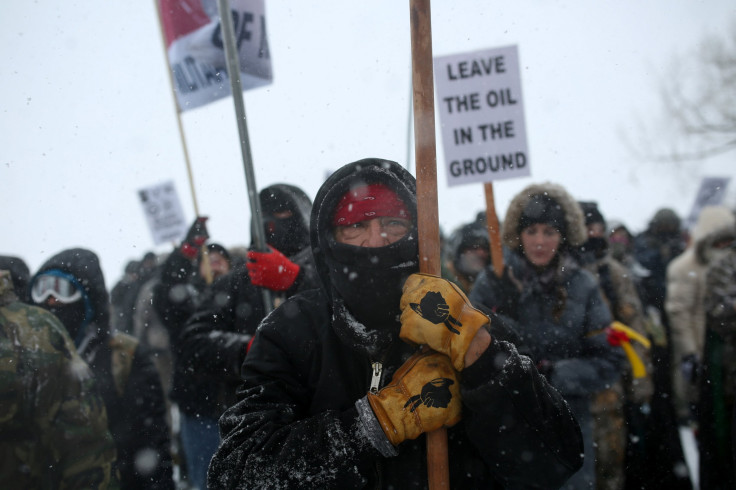What Will Trump Do About Standing Rock? Dakota Access Pipeline Protesters To Head Home As White House Spokesman Hints At Support For Project

As President Donald Trump looks to overturn a number of Obama administration decisions, those protesting the construction of the Dakota Access Pipeline may have a reason to worry.
On Saturday, the Standing Rock Sioux Tribe asked the thousands of demonstrators from across the country — who had gathered at a camp near Cannon Ball, North Dakota, to help bring the work on the pipeline to a halt — to go home and let elected officials work out the legislative and administrative processes. Days after that, on Tuesday, White House Press Secretary Sean Spicer hinted that the new administration may push for the completion of the project.
“I’m not going to get in front of the President’s executive actions,” Spicer said during a briefing, “but I will tell you that areas like the Dakota and Keystone pipeline areas that we can increase jobs, increase economic growth, and tap into America’s energy supply.”
Spicer added that the president is “very very keen in making sure we maximise use of our natural resources to America's benefit.”
The protestors won a major victory in December when the U.S. Army Corps of Engineers denied the builder of the $3.8 billion pipeline — Texas-based Energy Transfer Partners — a permit to complete the final leg of the pipeline, which is supposed to stretch across North Dakota, South Dakota, Iowa, and Illinois.
Over the past few months, a large number of protesters have gathered near the Standing Rock Sioux reservation to protest the pipeline. They have expressed fears that local water supply could be contaminated and sacred sites destroyed if the project is allowed to continue. Following the December decision, authorities called for a more complete environmental analysis, delaying the project.
However, with Trump taking office, he may easily overturn the Environmental Impact Study ordered by former President Barack Obama. In the past, the construction mogul reportedly owned between $500,000 and $1 million in shares of Energy Transfer Partners, but most of these were sold and last summer, he held less than a $50,000 stake in the company.
According to an early December memo by his aide Bryan Lanza, Trump’s backing for the Dakota Access Pipeline project “has nothing to do with his personal investments and everything to do with promoting policies that benefit all Americans.”
© Copyright IBTimes 2025. All rights reserved.






















